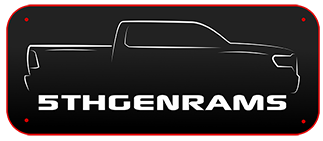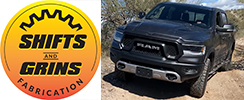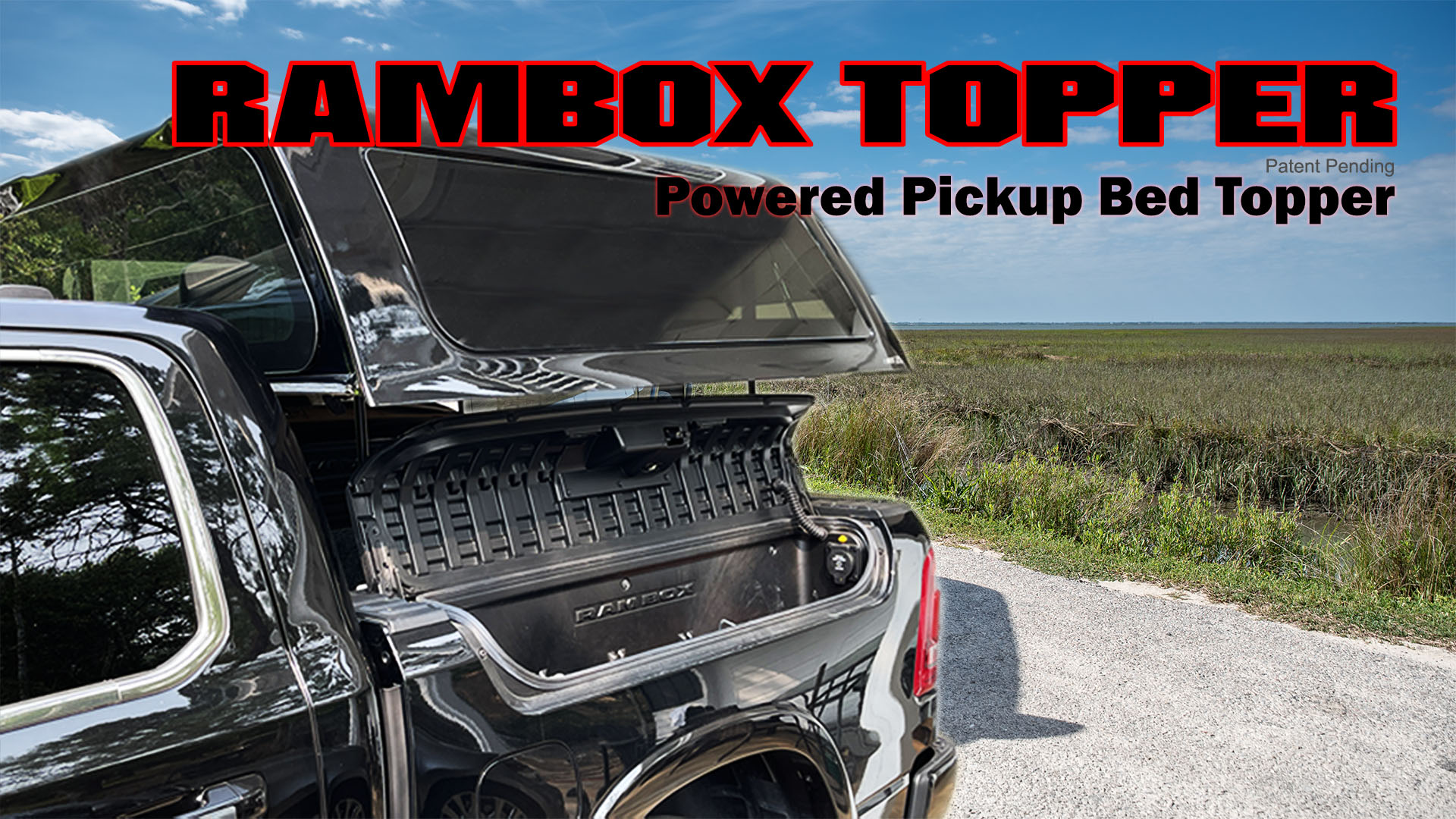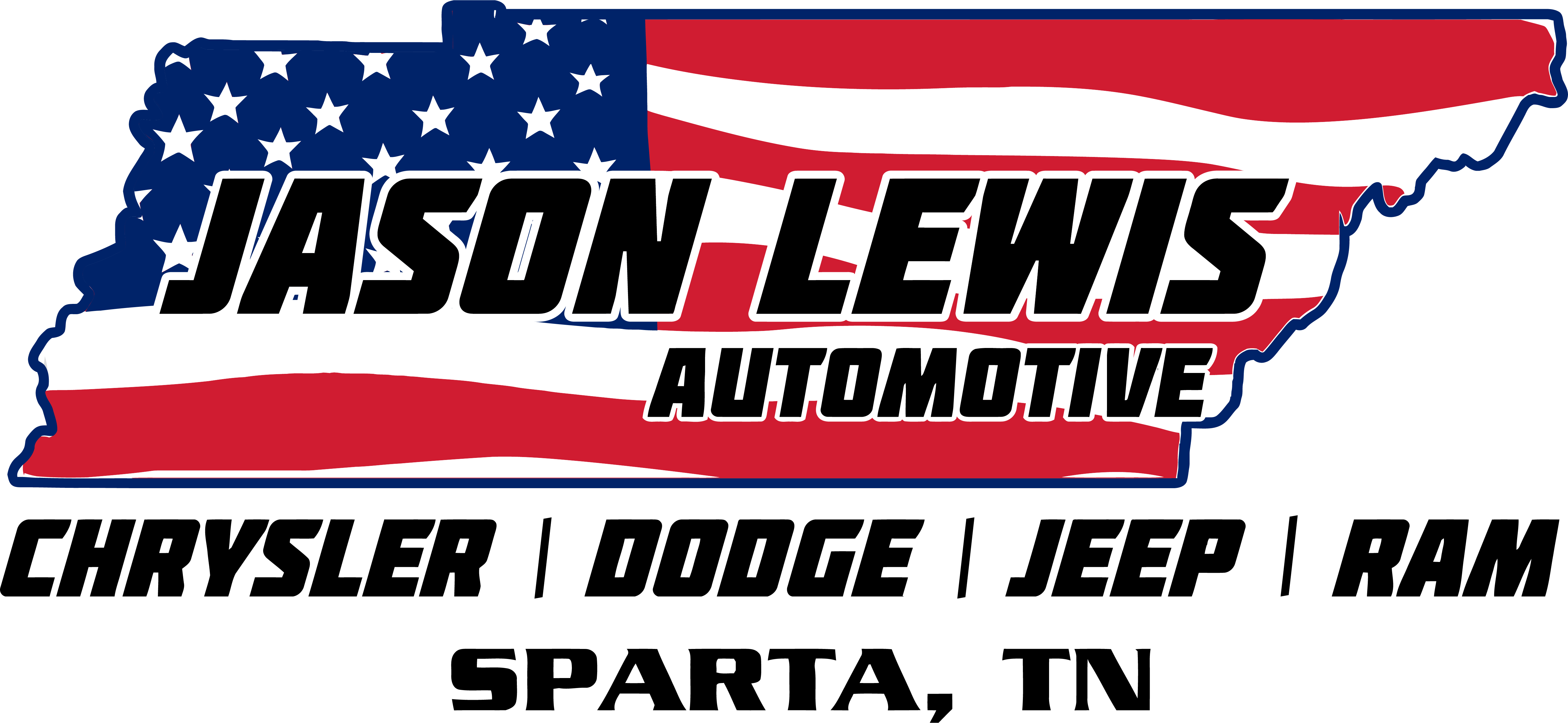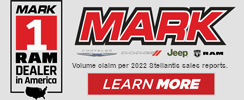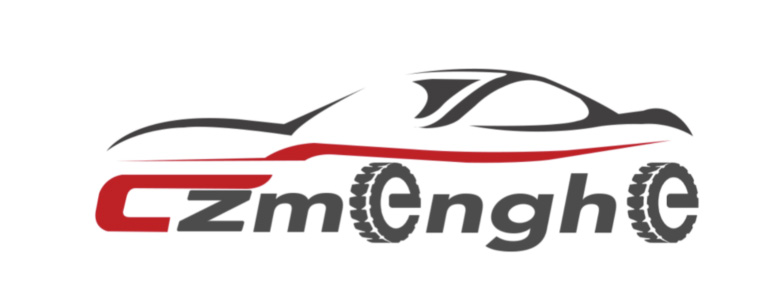5thGenRams Forums
You are using an out of date browser. It may not display this or other websites correctly.
You should upgrade or use an alternative browser.
You should upgrade or use an alternative browser.
2025 Ram 1500 Current Owners - Discussion, Feedback, and Problems
- Thread starter firecadet613
- Start date
2025 rebel junk
Well-Known Member
- Joined
- Oct 2, 2024
- Messages
- 451
- Reaction score
- 166
- Points
- 43
- Age
- 48
i agree and wait for normal temps. After that you better floor it test it out break **** now not later or when towing.Break-in for me is just to drive normal for the first 500 miles or so without stomping on the go pedal.
millerbjm
Ram Guru
Just noticed when ordering my 2025 Laramie CC 6'4" bed it doesnt have an option for fuel tank. I also noticed the new tradesman CC 6'4" box trucks we got at work all have 33gal tank. Can anyone confirm if the 33gal is standard on 2025? I'm have to play with the configuration to see if it is related to cab, bed length it maybe able ratio..
2025 rebel junk
Well-Known Member
- Joined
- Oct 2, 2024
- Messages
- 451
- Reaction score
- 166
- Points
- 43
- Age
- 48
33 gallon is a option most are 26 gallon standardJust noticed when ordering my 2025 Laramie CC 6'4" bed it doesnt have an option for fuel tank. I also noticed the new tradesman CC 6'4" box trucks we got at work all have 33gal tank. Can anyone confirm if the 33gal is standard on 2025? I'm have to play with the configuration to see if it is related to cab, bed length it maybe able ratio..
millerbjm
Ram Guru
I played around with the build site and it when you build a truck with the 6'4" bed it makes the 33gal tank standard. If you build a 5'7" bed it has the 33gal as an option. In my 2023 the standard tank was 23 on short bed and 26 on long bed trucks with options to go bigger I believe. Between the 3.92 axle I ordered and the 33gal tank this truck should be a nicer tow rig than my current truck.33 gallon is a option most are 26 gallon standard
2025 rebel junk
Well-Known Member
- Joined
- Oct 2, 2024
- Messages
- 451
- Reaction score
- 166
- Points
- 43
- Age
- 48
I was thinking that 6 4 beds got 33 standard now i know.I played around with the build site and it when you build a truck with the 6'4" bed it makes the 33gal tank standard. If you build a 5'7" bed it has the 33gal as an option. In my 2023 the standard tank was 23 on short bed and 26 on long bed trucks with options to go bigger I believe. Between the 3.92 axle I ordered and the 33gal tank this truck should be a nicer tow rig than my current truck.
Read the owners manual. Don't listen to advice from people who don't own your truck.i agree and wait for normal temps. After that you better floor it test it out break **** now not later or when towing.
Laramieblue
Active Member
- Joined
- Aug 25, 2024
- Messages
- 119
- Reaction score
- 106
- Points
- 43
When I ordered my 2025 1500 Laramie with 6'4 bed there was NO option to add the 33 gal tank in the dealer's ordering system nor for the build & price website. We assumed I would be getting the 26 gal tank. I now have the truck and just burned up the dealer's gas, when I filled it up at 1/4 tank level it took 27 gallons with no spillage on the ground. I also notJust noticed when ordering my 2025 Laramie CC 6'4" bed it doesnt have an option for fuel tank. I also noticed the new tradesman CC 6'4" box trucks we got at work all have 33gal tank. Can anyone confirm if the 33gal is standard on 2025? I'm have to play with the configuration to see if it is related to cab, bed length it maybe able ratio..
Break-in for me is just to drive normal for the first 500 miles or so without stomping on the go pedal.
Break-in for me is just to drive normal for the first 500 miles or so without stomping on the go pedal.
When I bought my new trucks I wondered the same thing about the break in period. So I talked to some mechanics and this is the general consensus: In the old days you need to drive conservatively to allow the friction surfaces (pistons, bearings) to smooth out each other to get a good seal and bearing surface. But that wear surface area must cover the complete area of wear. If one drives conservatively the piston will never reach the full stroke length and develop a very small ridge on the cylinder wall where it was worn in. Now when the driver goes balls to the wall the piston will stretch just a bit further on the up and down stroke and bang against this small ridge it will cause a bit of damage to the piston's rings and groves.Break-in for me is just to drive normal for the first 500 miles or so without stomping on the go pedal.
The more modern engines are made of better materials and machined to tighter specifications so there is very minimal wear on friction surfaces and little stretching of oscillating parts so they say just drive like one would normally drive.
I know from experience that after putting on 85K or so miles on the old Chevy 327 it had a piston wear edge you could easily feel and the bore diameter was worn so much it needed to be bored out next size up. My 1986 Nissan truck with V6 engine and 85K miles on it had No ridge on cylinder walls that I could feel so maybe the mechanics are right.
Just my 2 cents on what I have experienced.
2025Rebelguy
Active Member
Break-in is really about getting the best possible ring seal on the cylinder wall. Other engine/drivetrain parts will also clearance/seat. Using heavy throttle without high RPM, then reduce the load and slow the RPM to allow the rings to cool down. Repeat. If you are too hard too long, they will glaze and the break in process stops. As someone else mentioned, the engine must be fully warmed up before doing any loading to allow full thermal expansion. I used to work for a vehicle manufacturer and did many vehicle break-ins and prep before they were released to journalists at their press intros. An oil change is always a good idea after break-in.
gskowronek
Active Member
- Joined
- Mar 22, 2024
- Messages
- 165
- Reaction score
- 152
- Points
- 43
- Age
- 46
6'4" bed only comes with 33galJust noticed when ordering my 2025 Laramie CC 6'4" bed it doesnt have an option for fuel tank. I also noticed the new tradesman CC 6'4" box trucks we got at work all have 33gal tank. Can anyone confirm if the 33gal is standard on 2025? I'm have to play with the configuration to see if it is related to cab, bed length it maybe able ratio..
RedFred
Ram Guru
- Joined
- Jul 6, 2022
- Messages
- 600
- Reaction score
- 549
- Points
- 93
To contradict your point for arguments sake, many new sports cars come with a break-in (reduced power) mode built into the computer. I think the new Corvette for example, you are running at reduced power and limited rpm range until you hit the 500 mile mark on the odometer. That being said, I do believe it's good to open up the motor every once in awhile after the break in period.When I bought my new trucks I wondered the same thing about the break in period. So I talked to some mechanics and this is the general consensus: In the old days you need to drive conservatively to allow the friction surfaces (pistons, bearings) to smooth out each other to get a good seal and bearing surface. But that wear surface area must cover the complete area of wear. If one drives conservatively the piston will never reach the full stroke length and develop a very small ridge on the cylinder wall where it was worn in. Now when the driver goes balls to the wall the piston will stretch just a bit further on the up and down stroke and bang against this small ridge it will cause a bit of damage to the piston's rings and groves.
The more modern engines are made of better materials and machined to tighter specifications so there is very minimal wear on friction surfaces and little stretching of oscillating parts so they say just drive like one would normally drive.
I know from experience that after putting on 85K or so miles on the old Chevy 327 it had a piston wear edge you could easily feel and the bore diameter was worn so much it needed to be bored out next size up. My 1986 Nissan truck with V6 engine and 85K miles on it had No ridge on cylinder walls that I could feel so maybe the mechanics are right.
Just my 2 cents on what I have experienced.
2025 rebel junk
Well-Known Member
- Joined
- Oct 2, 2024
- Messages
- 451
- Reaction score
- 166
- Points
- 43
- Age
- 48
i though new vents are 1500 milesTo contradict your point for arguments sake, many new sports cars come with a break-in (reduced power) mode built into the computer. I think the new Corvette for example, you are running at reduced power and limited rpm range until you hit the 500 mile mark on the odometer. That being said, I do believe it's good to open up the motor every once in awhile after the break in period.
2025 rebel junk
Well-Known Member
- Joined
- Oct 2, 2024
- Messages
- 451
- Reaction score
- 166
- Points
- 43
- Age
- 48
500 your right . no track use for 1500i though new vents are 1500 miles
Android Auto Missing apps like spotify? Just a note, if you used the samsung app store instead of the Google Play store, the app won't show up in Android Auto on your RAM. The apps work in my BMW and Porsche but not my RAM. Uninstalled the App, reinstalled from the Google Play store, and voila!!
Your welcome!
Your welcome!
2025Rebelguy
Active Member
So I get to add totally dead batteries to my Rebel problems list. Drove to my parents for Christmas eve, stayed the night, went out to leave this afternoon, and nothing. No light, no horn. Put dads charger on it for a couple hours and it started. when I connected the charger, the horn started beeping, all kinds of lights flashing, could not get it to stop. ended up removing the charger and hooked it back up, the horn started again, hitting "lock" on the FOB was the only way I get it to stop,. I Also had a check engine light now. I drove about an hour home and monitored everything; no issues other than the CEL. I shut it down and restarted once at home, fired right up, CEL still on.
Willwork4truck
Spends too much time on here
I bought from MD and it was an 800 mile return highway trip, little opportunity to vary rpm a lot and certainly didn't go way fast due to Al and Ga speed enforcement that was out thick as flies on Dec 31st-Jan 1st of that year.500 your right . no track use for 1500
So whatever break in it got was accomplished on that straight through run home.
Ramboy13
Ram Guru
Do you have a scanner? It maybe stop at a parts store and ask them to scan. At least you’ll know the codes and whether or not it’s something that shouldn’t be driven.So I get to add totally dead batteries to my Rebel problems list. Drove to my parents for Christmas eve, stayed the night, went out to leave this afternoon, and nothing. No light, no horn. Put dads charger on it for a couple hours and it started. when I connected the charger, the horn started beeping, all kinds of lights flashing, could not get it to stop. ended up removing the charger and hooked it back up, the horn started again, hitting "lock" on the FOB was the only way I get it to stop,. I Also had a check engine light now. I drove about an hour home and monitored everything; no issues other than the CEL. I shut it down and restarted once at home, fired right up, CEL still on.
RamTruckMan
Ram Guru
My wife’s Toyota died and the CEL came on after jumping. It cleared when checked. It was for low voltage. This may be the same thing.So I get to add totally dead batteries to my Rebel problems list. Drove to my parents for Christmas eve, stayed the night, went out to leave this afternoon, and nothing. No light, no horn. Put dads charger on it for a couple hours and it started. when I connected the charger, the horn started beeping, all kinds of lights flashing, could not get it to stop. ended up removing the charger and hooked it back up, the horn started again, hitting "lock" on the FOB was the only way I get it to stop,. I Also had a check engine light now. I drove about an hour home and monitored everything; no issues other than the CEL. I shut it down and restarted once at home, fired right up, CEL still on.
So I get to add totally dead batteries to my Rebel problems list. Drove to my parents for Christmas eve, stayed the night, went out to leave this afternoon, and nothing. No light, no horn. Put dads charger on it for a couple hours and it started. when I connected the charger, the horn started beeping, all kinds of lights flashing, could not get it to stop. ended up removing the charger and hooked it back up, the horn started again, hitting "lock" on the FOB was the only way I get it to stop,. I Also had a check engine light now. I drove about an hour home and monitored everything; no issues other than the CEL. I shut it down and restarted once at home, fired right up, CEL still on.
I agree with RamTruckMan, I got a CEL a while back after unplugging the main battery and not the secondary one. It was something like that, low voltage but I think that's all you have. Take it to the dealer though, they need to find out what caused your battery to drain.My wife’s Toyota died and the CEL came on after jumping. It cleared when checked. It was for low voltage. This may be the same thing.
2025 rebel junk
Well-Known Member
- Joined
- Oct 2, 2024
- Messages
- 451
- Reaction score
- 166
- Points
- 43
- Age
- 48
man sorry to hear. Was reading an old post and it seems others have noticed that we got riped off on leds and light animation . So is it true they bought your old truck back cause of it. I was flipping the day i picked it up they kept telling me it will get fixed software lies. If this is true i found my way out. They didn't offer any compensation just to buy back truck.So I get to add totally dead batteries to my Rebel problems list. Drove to my parents for Christmas eve, stayed the night, went out to leave this afternoon, and nothing. No light, no horn. Put dads charger on it for a couple hours and it started. when I connected the charger, the horn started beeping, all kinds of lights flashing, could not get it to stop. ended up removing the charger and hooked it back up, the horn started again, hitting "lock" on the FOB was the only way I get it to stop,. I Also had a check engine light now. I drove about an hour home and monitored everything; no issues other than the CEL. I shut it down and restarted once at home, fired right up, CEL still on.
Users who are viewing this thread
Total: 1 (members: 0, guests: 1)
